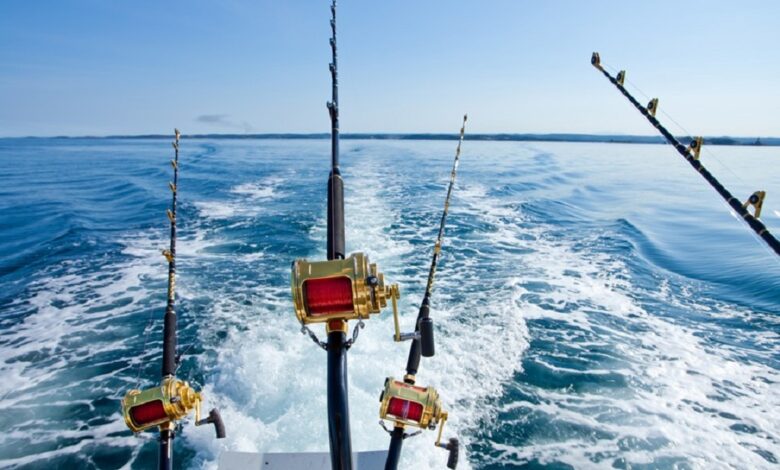Jig, Troll, or Drift? When to Use Each Fishing Technique

Choosing the right fishing method fishing technique can be the difference between an empty cooler and a day of non-stop action. Whether you’re new to fishing or a seasoned angler, understanding when to jig, troll, or drift is critical for targeting different species, adapting to water conditions, and maximizing success.
Understanding the Core Differences
Each technique jigging, trolling, and drifting requires different gear, strategies, and environmental conditions. Knowing when to apply each helps reduce guesswork and increases your catch rate.
- Jigging involves vertical rod movements to make the bait dance underwater.
- Trolling means dragging bait behind a moving boat to cover large water areas.
- Drifting uses natural currents or wind to carry your bait through a target zone.
Let’s break down each method and reveal when they shine.
Jigging: Precision and Action-Packed
Jigging offers unmatched control. Anglers use weighted lures (jigs) to mimic wounded baitfish. The up-and-down rod action triggers predatory strikes, especially in deep or structured waters.
Jigging works best in:
- Deep lakes, offshore reefs, or underwater structures.
- Clear waters where fish rely on sight.
- Cold water, where slow vertical presentation is effective.
Data-backed insight: According to In-Fisherman, jigging accounts for 40% of wintertime walleye catches due to the direct control it gives anglers.
Real-world example: In Northern lakes, ice anglers rely on jigging for lake trout and walleye. The vertical motion entices sluggish fish into biting, even during freezing temperatures.
However, jigging isn’t ideal for covering large areas quickly. It requires patience, location knowledge, and sometimes, finesse rods or electronics to pinpoint fish.
Trolling: Cover More Water, Catch More Fish
Trolling is a go-to technique when locating scattered fish or fishing expansive waters like the Great Lakes or ocean.
It involves:
- Pulling bait or lures behind a boat at various depths.
- Using downriggers, planer boards, or diving weights to adjust lure depth.
- Monitoring sonar for schools of fish.
When to use it:
- Targeting pelagic species like salmon, tuna, or walleye.
- In early spring or late summer when fish are moving.
- When fishing unfamiliar water bodies.
Trolling allows anglers to test different depths and lures at once. As Field & Stream reports, trolling boosts catch rates by up to 60% in large open waters where fish suspend at variable depths.
Drawback: Trolling requires a boat, fuel, and sometimes complex rigging systems. It’s not ideal for shore anglers or small lake fishing.
Drifting: Simple Yet Strategic
Drifting uses wind or current to move your bait across structure or feeding zones. It’s particularly useful when fish are scattered but not aggressive.
Anglers often drift with:
- Live bait rigs or slip sinker setups.
- Bottom bouncers or Carolina rigs in freshwater.
- Natural bait like squid or cut bait in saltwater.
Best used in:
- Moderate wind or current.
- Shallow flats or contour lines where fish roam.
- Mixed-species areas with unpredictable feeding patterns.
Drifting works wonders in spring and fall. Fish often suspend or cruise mid-depths, and the natural bait motion from drifting can be irresistible.
Logic-based tip: In calm conditions, add a drift sock or sea anchor to control boat speed. This keeps your bait in the strike zone longer.
Jig, Troll, or Drift? When to Use Each Fishing Technique
Now comes the big question: Jig, Troll, or Drift? When to Use Each Fishing Technique?
Here’s a quick guide based on conditions:
- Use jigging when fish are deep, stationary, or picky. Ideal for cold water or around structure.
- Use trolling to find roaming or suspended fish. Great for large bodies of water and migratory species.
- Use drifting when fish are feeding across flats or contours, especially with live bait.
Experienced anglers often switch between methods during a single trip. For instance, drift first to locate fish, then anchor and jig once a hotspot is found.
Opinions from the Water: What Anglers Say
Many tournament anglers favor trolling for its efficiency. “Trolling wins tournaments,” says pro angler Gary Parsons. “It lets me put multiple lines in front of fish faster.”
On the other hand, jigging is popular among finesse anglers. It provides real-time feedback and a sense of connection. “There’s nothing like feeling that tap,” one bass angler noted on a fishing forum.
Drifting has its loyalists too. Saltwater anglers off Florida often drift with live bait over reefs for grouper and snapper. It allows a quiet, natural approach without spooking fish.
Real Solutions: Matching Technique to Gear and Season
Each technique calls for different setups:
- Jigging gear: Short, sensitive rods with fast-action tips. Use braid for sensitivity.
- Trolling setup: Medium-heavy rods, baitcasters or trolling reels, and electronics like sonar or GPS.
- Drifting essentials: Live bait, bottom rigs, and rod holders. Use drift socks in strong wind.
Seasonal strategy:
- In spring, fish are shallow—drifting and trolling shine.
- Summer calls for trolling as fish move deep.
- In fall and winter, jigging is most effective near bottom structure.
Read More Also: Things you Need to Know Before you Become a Landlord
FAQs: Jig, Troll, or Drift?
Can I combine techniques in one trip?
Yes. Drift to scout, jig when fish are located, and troll to cover water in between.
Which technique is best for beginners?
Drifting is easiest. It requires less gear and works in most conditions with live bait.
Is trolling effective without electronics?
It’s harder. Electronics help find depth and schools. Still, surface trolling can work for aggressive species.
What species respond best to jigging?
Walleye, bass, crappie, and lake trout respond well to vertical jigging.
Do I need a boat for all three techniques?
Yes, for trolling and drifting. Jigging can be done from shore, kayak, or ice.
What speed should I troll at?
Depends on species. 1.5–2.5 mph for walleye; 3–5 mph for tuna or kingfish.
Can I drift in saltwater?
Absolutely. Drift over reefs, wrecks, or channels using live bait for snapper or grouper.
Read More Also: How to Deodorize Your Pillow Without Washing It
Final Thought: Choose Smart, Fish Smarter
Fishing isn’t just about luck. It’s about knowing when to jig, troll, or drift. When to use each fishing technique depends on species, water conditions, season, and your goals.
Don’t be afraid to experiment. Keep logs. Learn how each method behaves with your gear. A smart angler adapts—using data, logic, and instincts.




